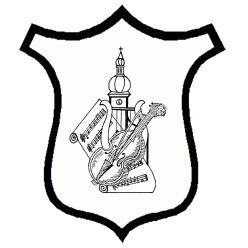P. Valentin Rathgeber has written a substantial oeuvre. Only a fractional part thereof has survived. Contrary to many of his fellow composers, Rathgeber directed to a broad audience when publishing his works. Rathgeber carefully studied the music market and masterfully supplied for it. He wrote ambitious music for modest conditions which could also compete with the music at court. It certainly would be a fruitful task for musicology to work out the aspects critical of society within Rathgeber’s works.
Rathgeber’s complete printed work is collected in the First German Tobacco Museum Oberelsbach and could be consulted there. This complete compilation established by the International Valentin-Rathgeber-Society e.V. facilitates research and editing. Since Rathgeber’s work is published in many single sheets, without this compilation, one has to go to different places to get all parts of one composition.
Due to this complete compilation it was possible to check the incipit of the extant manuscripts and to compare them with the prints. Thus, it was possible to find 55 new handwritten works of Rathgeber.Sacred vocal music written for different purposes has the lion’s share within Rathgeber’s oeuvre. Already the amount of prints is stunning:
|
164
|
|
|
61
|
|
|
42
|
|
|
36
|
|
|
16
|
|
|
Psalms
|
15
|
|
14
|
|
|
13
|
|
|
Requien
|
11
|
|
Miserere
|
8
|
|
6
|
|
|
Tenebrae
|
3
|
|
Magnificat
|
3
|
|
2
|
|
|
Libera
|
2
|
|
Compline
|
1
|
|
total number
|
397
|
Rathgeber also published the following secular works, namely instrumental and vocal music:
|
60
|
|
|
Tafelconfec
|
39
|
|
Concertos
|
24
|
|
total number
|
123
|
Apart from the printed oeuvre, Rathgeber has written many more works that have survived as manuscripts:
|
Hymns
|
19
|
|
Antiphons
|
14
|
|
Offertories
|
7
|
|
Litanies
|
6
|
|
Masses
|
5
|
|
Magnificat
|
2
|
|
Psalms
|
1
|
|
Requiem
|
1
|
|
total number
|
55
|
Thus, 575 works of Rathgeber are known so far.
All in all, the appraisal of G.J. Schatt, Benedictine monk in the convent of Banz, is still valid:
"All the other musical compositions which he didn't publish and which are religious for the most part testify to such a intellectual fruitfulness so that scarcely anybody could believe that just one man could have displayed such a various activity if one would not have seen this and would have been awestruck".
